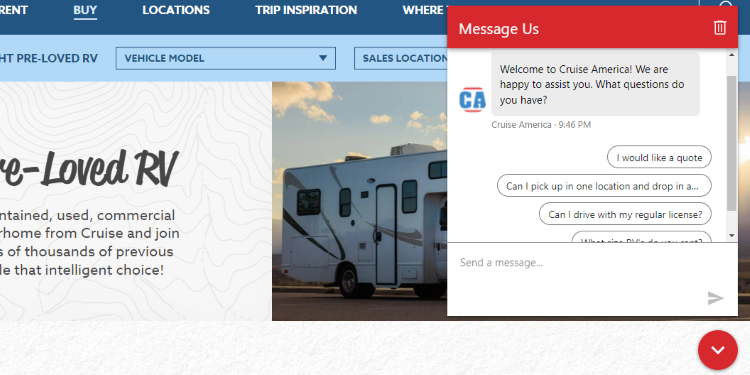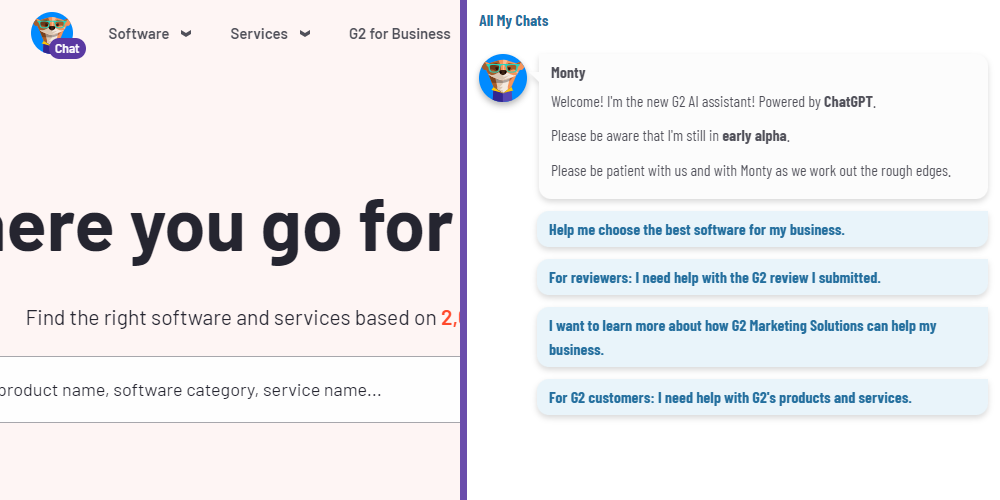The customer support experience matters more now than ever before. With endless competitors vying for your audience’s attention, one of the aspects that’ll set your company apart is how you respond to website visitors. Whether a customer needs help tracking a shipment or a prospect wants to book a demo, you need quick and easy ways to give them the support they need.
And that’s why customer support chatbots are invaluable.
However, deploying them without considering important ethics isn’t a good idea. You could risk data leaks, lose customer trust, and put your reputation on the line. Let’s take a closer look at what AI customer support chatbots are and some benefits of using them. We’ll also discuss why ethics matter and five ways to ethically deploy your customer support chatbot.
Ready to learn more?
Let’s begin.
What are AI customer service chatbots?
AI customer service chatbots are computer programs powered by artificial intelligence. They aim to interact with customers to provide support, answer questions, or handle inquiries. Bots simulate human conversations through text or voice, using algorithms to interpret queries and respond appropriately. Natural language processing helps them understand and generate human language in a meaningful and helpful way. By offering quick support around the clock — often integrated into websites, apps, or messaging platforms — chatbots can improve the customer experience.
And speaking of…
Benefits of AI customer service chatbots
AI-powered chatbots help you deliver a new level of customer service. They can help answer common customer support questions, find tutorials or book demos. They can also help website visitors buy something, submit their contact information to download a helpful guide or sign up for your email list. This reduces repetitive tasks your human agents may have been working on and frees up their time to handle complex issues instead.
With customer support chatbots, you can…
- Automate sales processes
- Transform web forms into engaging conversations
- Schedule meetings and sales calls efficiently
- Improve customer support
- Provide consistent 24/7 support across your communication channels
- Resolve customer issues faster with quick responses and no wait times
- Increase revenue and conversions
- Automate lead generation and qualification
- Increase conversions by engaging visitors proactively
- Meet future workforce needs
- Integrate AI bots as digital team members for faster responses
- Scale operations effectively to handle growing customer demands
- Improve marketing efforts
- Capture visitor attention with real-time engagement
- Convert website traffic into paying customers
- Create a smooth customer journey
- Offer proactive customer service to improve customer satisfaction
- Automatically qualify prospects and focus on the ones more likely to convert
- Provide multilanguage support
- Serve international customers
- Translate conversations instantly to expand global reach
Generate More Leads With Website & Messenger Chatbots
Gather quality leads on autopilot and 10x your ROI with automated chats
Why ethics matter when deploying AI chatbots for customer service
Your AI chatbot represents your company. If its communication and practices don’t align with your company’s values, it puts your reputation on the line.
You could risk violating privacy policies, losing data, and giving customers the wrong information. Worst of all, unethical practices can lead to customer mistrust.
You’ve worked hard to earn customer loyalty. By being intentional with your AI chatbot processes, you can preserve that trust and offer your customers better support.
5 Ways to ethically deploy an AI customer service chatbot
Here are five priorities to add to your list when deploying your AI customer service chatbot:
1. Remove bias
AI chatbots can hallucinate (meaning give out incorrect information) or generate biased recommendations. This doesn’t consider the customer’s best interests and can put them on a wild goose chase as they try to find the answer to their problem.
That’s why training your AI chatbot to remove biases and prevent them from influencing recommendations is essential.
You can regularly review and update your training data to encourage diversity and fairness. Implement algorithms designed to detect and mitigate bias. By doing this, you create a safe space for your customers and encourage a positive user experience.
Be sure to regularly audit your chatbot’s interactions to identify and correct any biases. For instance, if you run a staffing company, and a visitor asks about travel nurse positions and requirements, make sure its answers are correct and free of bias. It should answer visitors’ questions directly without stating an opinion or recommendation.
Here’s an example:

2. Keep personal data safe
Customer service chatbots are convenient, sure, but they may also cause some concern if you think about the personal info website visitors hand over to a robot. Companies can’t just toss AI assistants out there without considering the privacy and ethics side of things. Having standard security protocols like OpenID Connect (OIDC) is a good start to keep your data locked down tight.
But honestly, that’s just the tip of the iceberg.
It’s also important to be fully transparent about how you use their information, get consent, and genuinely prioritize building customer trust. In other words, don’t look at website visitors as just another revenue stream to be mined for profits. Remember, they’re real people who deserve to have a say in how their data is being used. (Plus, it’s the law.)
More on transparency in a bit.
3. Know when to transfer the chat to a live agent
There’s nothing more frustrating than speaking with a bot that repeatedly spits out the wrong answer or persistently delays the user’s ability to speak with a human agent.
That’s why it’s crucial that your bot must know when to transfer the chat to a live customer service agent for help.
For instance, consider Cruise America, a leading used RVs and rental services provider in the USA. On its website, it uses a chatbot to address common questions. But when it comes to more complex issues, like obtaining a quote, the bot openly informs users to redirect the chat to a live agent for personalized assistance. This approach respects the customer’s time and helps visitors receive the human touch needed to boost satisfaction and trust in the company’s services.

(Image Source)
Some examples of when a customer may need human intervention include:
- When the customer needs personalized or hands-on support (such as to book a travel package like in our example above)
- When the answer to a user’s question isn’t in your site’s resource section or knowledge base
- When they ask an elaborate or very specific question that the bot isn’t trained to answer
- When they express frustration with the bot’s instant responses or response times
- When they need help with a particular problem related to their purchase
- When an item they purchased never arrived
4. Maintain transparency
Transparency is key to ethical practice. Customers deserve to know whether they interact with a chatbot or a human. This openness fosters trust and prevents deception. To make your AI customer service bot more transparent, clearly disclose when customers are interacting with it. You might name your chatbot “AI assistant” or have the bot introduce itself as a helpful digital assistant. (More on this in the next section.)
Provide easy access to human representatives when needed and explain the bot’s decisions and actions. For instance, “I understand you’re looking for Kanban tutorials — is that right? Here’s a list of helpful tutorials. You can also find them in our Resource section.”
Be sure to also disclose to visitors how you use and protect their data to maintain transparency and build trust.
Include a link to your privacy policy somewhere in the chat box so visitors can quickly open it and read it. Also, disclose if you’re recording the chat conversation. For instance, Remote, a global HR management platform, links its policy directly under its bot’s automated prompts. It also discloses to visitors that it may record the chat.

5. Provide accurate information
Customers need your bot to answer their problems and queries correctly. Without the right information, they could purchase a product they don’t need, sign up for the wrong tool, or run into a usability error.
This causes distrust and wastes their time and money.
To ensure your AI customer service bot provides accurate information, train it on a robust dataset to ensure it provides accurate information. Also, ensure your dataset is comprehensive, up-to-date, and relevant to common queries your customers might have. Update this data regularly to inform the bot about your products, services, policies, and relevant industry trends. For example, if your company updates its return policy, immediately update the bot’s training data to reflect this change.
Be sure to also test and validate the bot’s responses.
Use feedback loops to promptly flag and fix errors. For instance, if a customer gets incorrect information about a product, it should trigger a review to correct the bot’s understanding and prevent future mistakes. If your bot is still in its early stages, let customers know you’re still working out the kinks. This helps them expect that your bot’s answers may not always be correct.
For example, G2, a software review company, recently deployed an AI-powered chatbot named Monty. Monty and G2’s welcome message in the chat box reads:
“Welcome! I’m the new G2 AI assistant! Powered by ChatGPT. Please be aware that I’m still in early alpha. Please be patient with us and Monty as we work out the rough edges.”

This immediately gives G2 visitors a heads-up that Monty wants to be helpful but may not be up to par just yet. Piggybacking on transparency, a message like this is more than appropriate when deploying a new bot.
Wrap up
Using a chatbot for customer service can help you lighten the mental load on your customer service team and give visitors faster support. It can also help you:
- Automatically qualify prospects and improve conversion rates
- Provide consistent 24/7 support
- Serve international customers
- Meet future workforce needs
- Automate sales processes
And so much more.
But, taking the time to intentionally set up your AI chatbot and improve it over time is pivotal to remaining ethical and keeping your customers and company safe.
If you’re ready to get started with a customer support bot, save this article and share it with your implementation team. If you’re still looking for a chatbot solution, you’ll love Botsify. Get more sales and take better care of your customers. Sign up for free now.
Here’s to your success!

